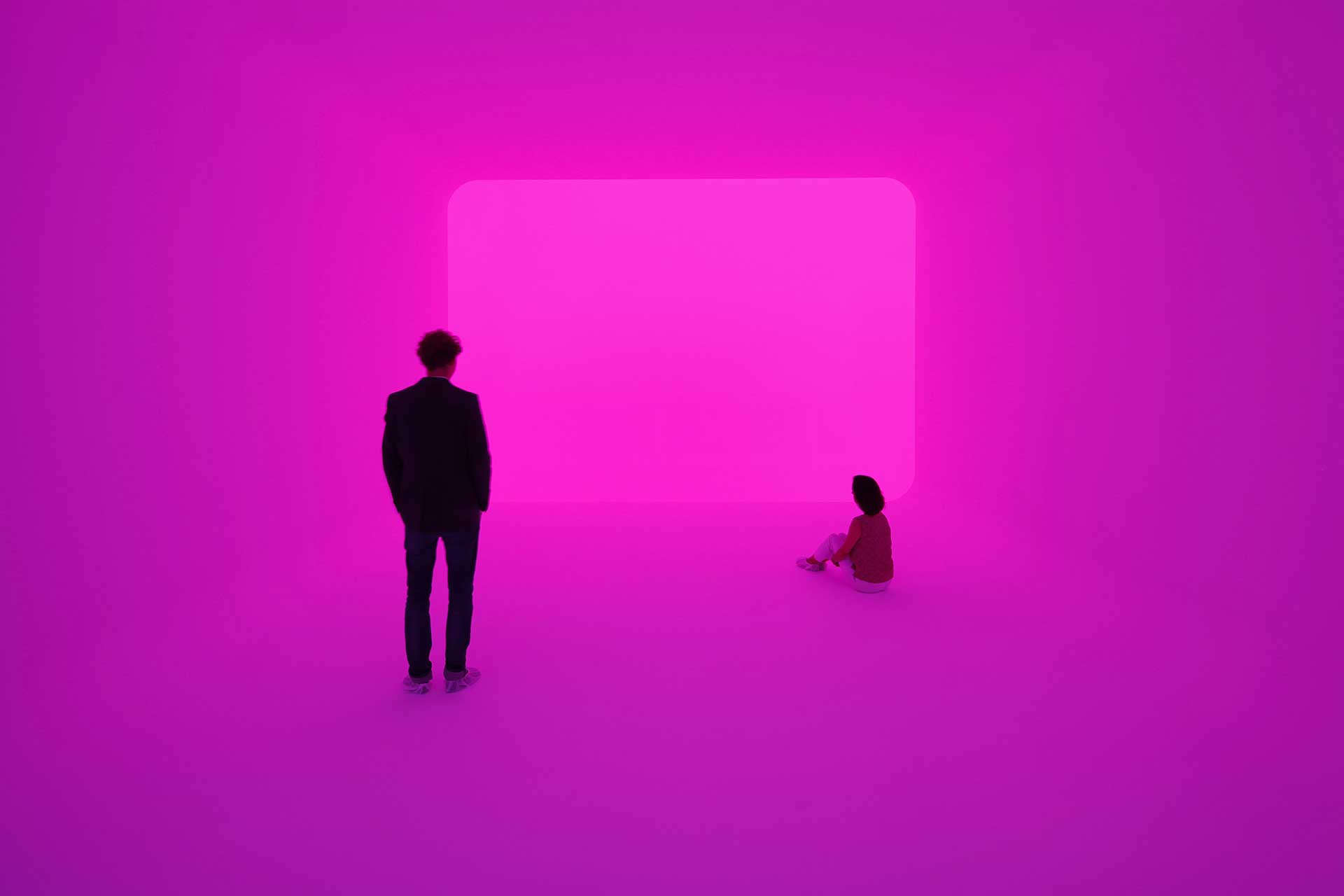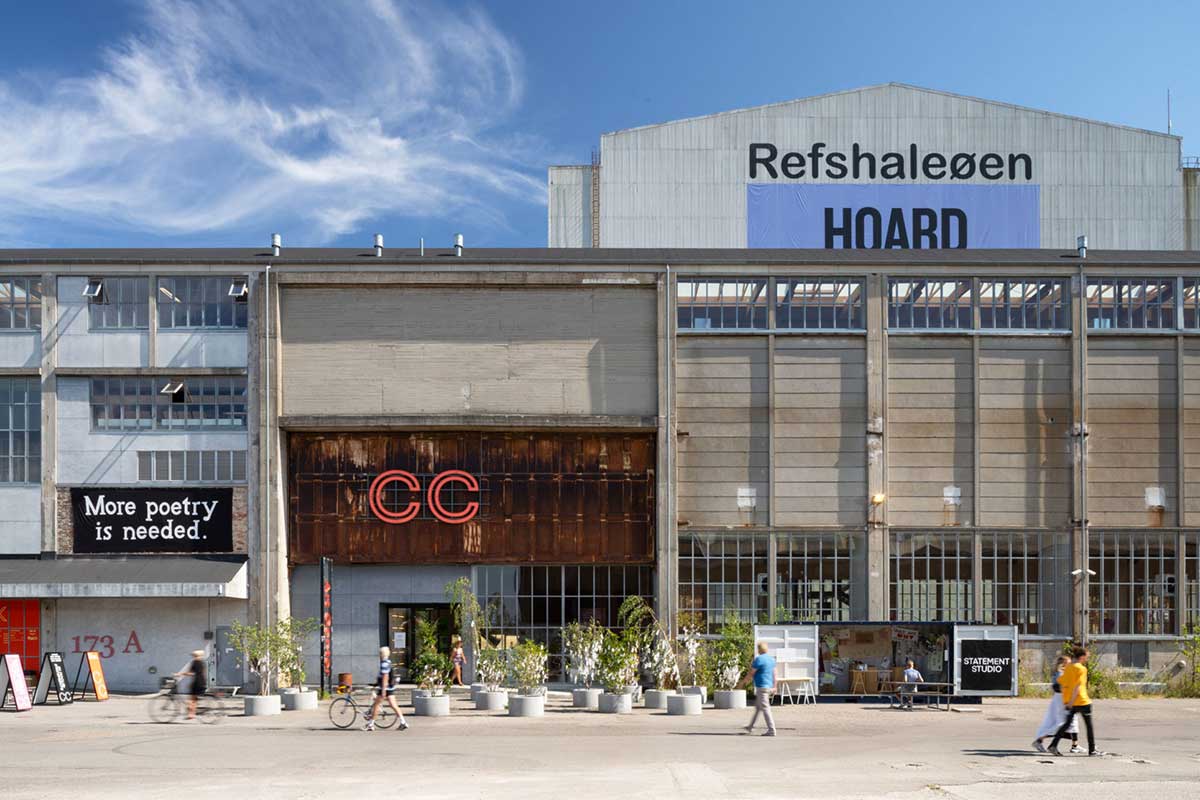In contrast with many art centers and institutions which implemented digital strategies to overcome the challenges imposed by the pandemic, Contemporary remains phisical
A space for artistic exploration in the heart of the city
Copenhagen Contemporary (CC) was born from the urge to accommodate the desire for contemporary art in Copenhagen where an art center particularly devoted to technically demanding large scale installation works did not exist until 2016. «Copenhagen Contemporary is an institution for the future. We wanted to add something new to the Danish artistic environment and we realized that it could be done through installation art».
«The large dimensions of the center and its characteristics allow us to provide the public with a new type of experience which would not be possible elsewhere» Marie Nipper, director of Copenhagen Contemporary, explains. As an institution for the future, it is determined to remain faithful to its mission and values without being stuck into an institutional form, on the contrary it keeps rethinking itself following the lead of the international artists it exhibits.
Pushing the boundaries of art at Copenhagen Contemporary
At Copenhagen Contemporary, established artists and emerging talents are encouraged to push the boundaries of art and have therefore carte blanche to experiment with scales, formats and media they are not familiar with. The 7,000 square foot of the former B&W welding hall which today hosts Copenhagen Contemporary’s exhibition venue also provides artists with a platform for projects they otherwise would never have the opportunity to develop because of several architectural and spatial constraints.
Besides installation art, Copenhagen Contemporary is committed to give space to and enhance the discussion around performance art, a complex and multifaceted artistic language unconsidered by the majority of Danish cultural entities, according to Nipper: «Performative strategies are very costly and represent a challenge for many institutions because they require a stage and appropriate structures. However, there is a lot going on in the contemporary art scene and we acknowledge that the performance art movement cannot be overlooked any longer».
The catalogues of the exhibitions, edited by the art center, can be found in the shop which offers a range of publications, from art magazines to Danish design guides. Copenhagen Contemporary aims at broadening its range of products with customized items and collaborations with international artists and brands, such as Soulland. For instance, in December, the shop will expand with new items connected to their upcoming exhibition Light & Space. The café of Copenhagen Contemporary will also turn into an unconventional design shop as all its furniture pieces will be purchasable by the art center’s visitors and café’s customers.
Digital vs. Physical at Copenhagen Contemporary: the challenges imposed by the pandemic
For an art center specialized in 3D art and installations, Covid-19 represented a major challenge. The difficulties occurred in shifting physical art experiences into Covid-friendly exhibitions, such as Reproduction by Carsten Höller, on display during the first lockdown by the Danish government in 2020. The visitors were in fact encouraged to physically engage with the big size installation which transformed the hall into a biology based playscape. In 2020 they also converted an exhibition which was supposed to take place inside Copenhagen Contemporary’s venue into an open air art show which took over several corners of the city’s public space.
The show, titled In Focus: Statements, addressed the current political global crisis well represented by the Me Too movement and the Black Lives Matter movement, by presenting works of art with political texts and messages by international artists, such as Jenny Holzer, Adrian Piper, John Giorno and Yoko Ono. In contrast with many art centers and institutions which implemented digital strategies to overcome the challenges imposed by the pandemic, Copenhagen Contemporary demonstrated its unconventional approach once again.
«We are very much focused on the physical aspect of art, we are not interested in making physical artworks into digital ones. However, we did a digital art exhibition (We=Link: Sideways, ed) in partnership with Chronus Art Center, Shanghai, and other international museums, in which we presented artworks by some of the pioneers of net art specifically designed in the nineties for digital platforms» Nipper explains.
Copenhagen Contemporary’s social commitment
During the pandemic, the Copenhagen based art center’s digital practice concerned mainly the learning activities of CC Studio at Home, the digital version of CC Studio, Copenhagen Contemporary’s learning and mediation center which occupies 1,200 square foot of the exhibition venue. During the months of lockdown, Copenhagen Contemporary offered to kids and students the opportunity to participate in online creative workshops and, when possible, it physically involved children who faced challenges in keeping up their education because of the social threat of digital divide in learning opportunities and interactions with their peers.
Copenhagen Contemporary’s outreach program started long before the outbreak of Covid-19 and involved areas of Copenhagen and its suburbs which are listed among the ghettos of Denmark, and whose inhabitants still suffer from stigmatization.
«We want our art center to be as inclusive as possible. Our guests are at the center of the experience and they must feel welcome no matter their race, gender, background or familiarity with contemporary art. In fact, we do not have guards inside our halls, but hosts who welcome the visitors and provide them with information regarding the artworks» Nipper claims. This approach stems from the assumption that the participants of the artistic discourse must reflect the diversity of contemporary societies, composed of several heterogeneous groups.
Activities and involvement at Copenhagen Contemporary Studio
Born as a place devoted to community, the aim of Copenhagen Contemporary Studio is to create a safe environment in which everyone can engage with art by getting involved in learning activities and by interacting with others. Copenhagen Contemporary was designed as a place in which different generations can enjoy art at the same time through artistic projects tailored for families, where kids can engage both with adults and with their peers and assimilate values which will allow them to become responsible citizens in a democratic society.
Copenhagen Contemporary’s attention to inclusion is reflected in everything they do, from their socially responsible program ranging from talks on gender issues and racism, to the collaborations with artists who deal with sensitive topics through contemporary languages. «Our staff also reflects the differences of society in gender, ethnic groups and educational backgrounds; for instance, we do not only have art historians on our board, but also professionals coming from different contexts and capable of giving new ideas and looking at things from different perspectives» Nipper explains.
Copenhagen Contemporary: Light & Space
On 3 December, Copenhagen Contemporary will unveil a project on which they have been working for more than two years, according to Nipper. Superstars from the American Light and Space movement, including female artists still unknown to most people, will gather in an art exhibition titled Light & Space which will take over the whole surface of the art center. «Many of the artists who in the 1960s experimented with light and unconventional materials influenced the following generations of artists and are today world names of the contemporary art scene. They were the first ones to make art a bodily experience, more than an intellectual one» Nipper explains.
James Turrell will present one of his ganzfelds – also known as sensing spaces – called Aftershock, specifically designed for the spaces of Copenhagen Contemporary, while Doug Wheeler will unveil a large size installation consisting of a 1,600 square foot dome where visitors will have the feeling of watching at the horizon and see the sky change and move.
Other artists exhibited will be Anish Kapoor, Olafur Eliasson, Robert Irwin and Bruce Nauman, among others. Light & Space will also feature some iconic pieces which marked the history of the movement and have never been shown in Europe before. On occasion of this exhibition, Copenhagen Contemporary had the opportunity to research the art historical gap between Europe and Southern California, where the Light and Space movement was born in the 1960s, and redirect the attention of the public to an often overlooked American contemporary art capital.
Yet, it moves! and the future of Copenhagen Contemporary
Thanks to its approach towards the art scene and art curating, in only five years Copenhagen Contemporary has established itself as a leading art institution in the Danish contemporary art scene. On occasion of the Vision Exhibition Award, accompanied by a money prize of DKK 5 million, in 2023 the Copenhagen-based art center will unveil Yet, it moves!, a research project and public art exhibition investigating the theme of movement across scales from the micro to the macro cosmos.
Curated by Irene Campolmi, Yet, it moves! is realized in collaboration with four scientific research partners: DARK, the Niels Bohr Institute at the University of Copenhagen, specialized in the study of the black holes; Arts at CERN in Geneva, where there is the largest and most powerful particle accelerator; the Interacting Minds Centre at Aarhus University and the Program in Performance Studies and ModLab, University of California, Davis, which investigate how the movement between people affects the surrounding world through the study of behavioral sciences.
Dance and choreography at Copenhagen Contemporary
At the beginning, Marie Nipper and the curatorial team had been discussing about dance and choreography, but the discussion was quickly shifted to the broader topic of movement: «We believed that in a post pandemic world, the theme of movement could be particularly interesting because, even though during the lockdown months we thought that everything was stuck just like us, the world was actually still moving on! Also, most of the artworks exhibited will be accessible to everyone as they will be placed in different corners of the city where people live and move on a daily basis».
Regarding the future, Nipper hopes to enhance Copenhagen Contemporary’s outreach by being more present in the public space and by approaching new potential art enthusiasts, perhaps also through a new physical venue. Collaborations, both on a national and international level, will characterize the next moves of the Copenhagen art center, which hopes to create new synergies after two years marked by detachment and isolation.
Copenhagen Contemporary (CC)
Copenhagen Contemporary (CC) is Copenhagen’s international art center showing installation art created by world stars and emerging talents. It occupies Copenhagen’s former B&W welding hall. Since 2016, CC has organized exhibitions featuring, among others, Bruce Nauman, Yoko Ono, Carsten Nicolai, Anselm Kiefer, SUPERFLEX, Claudia Comte, Marianna Simnett, Donna Huanca, Carsten Höller, Larissa Sansour and David Shrigley.




















